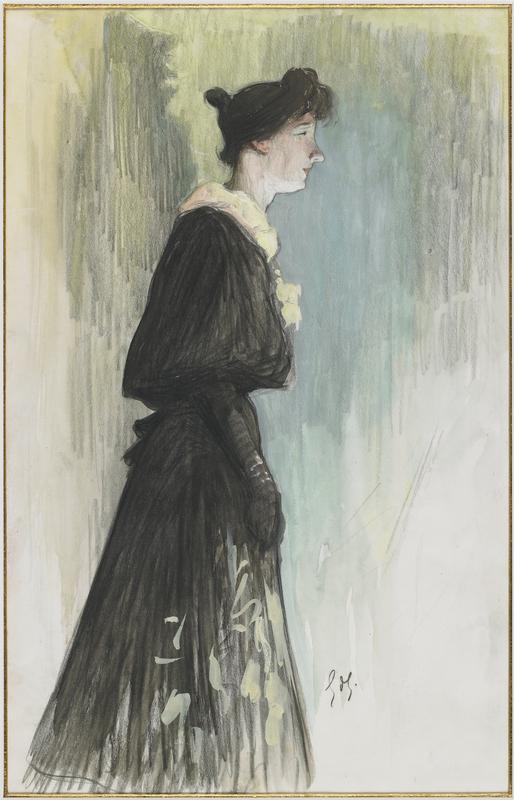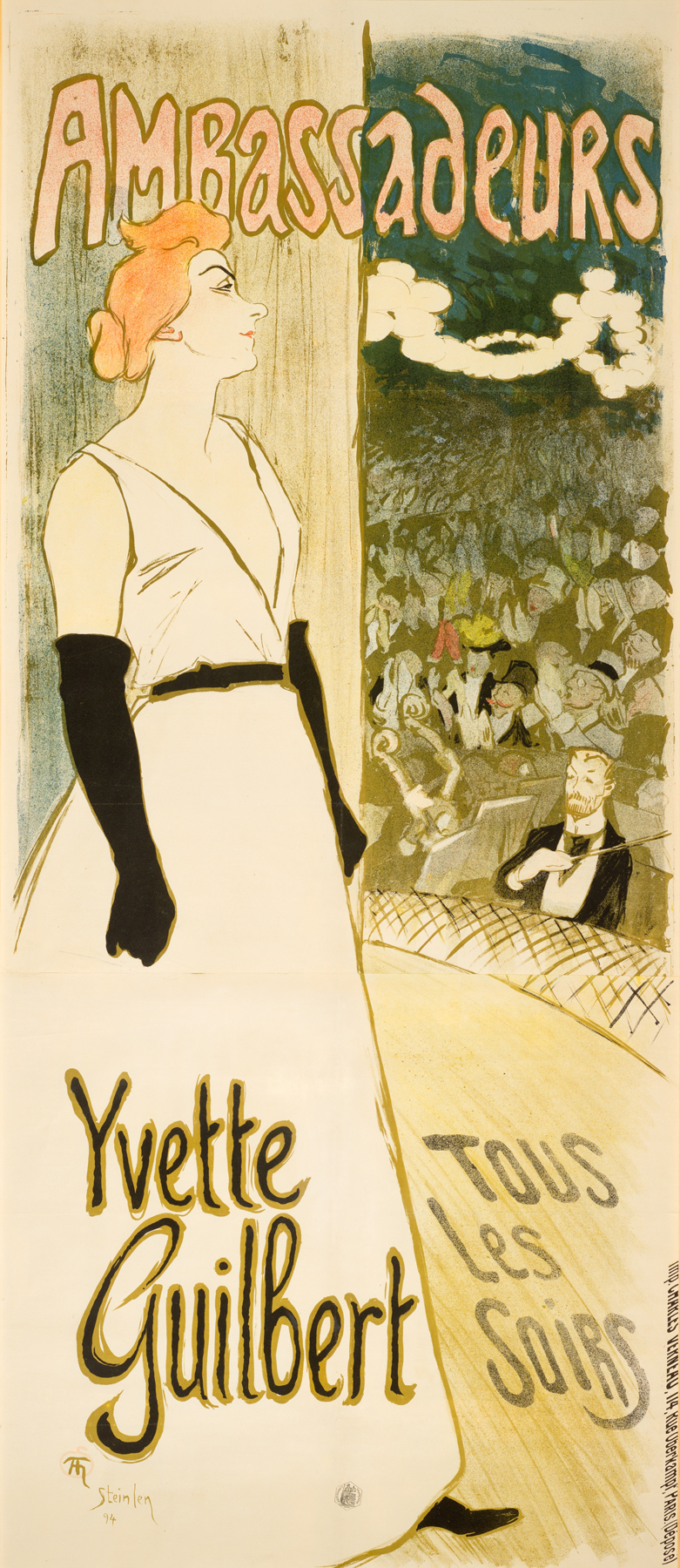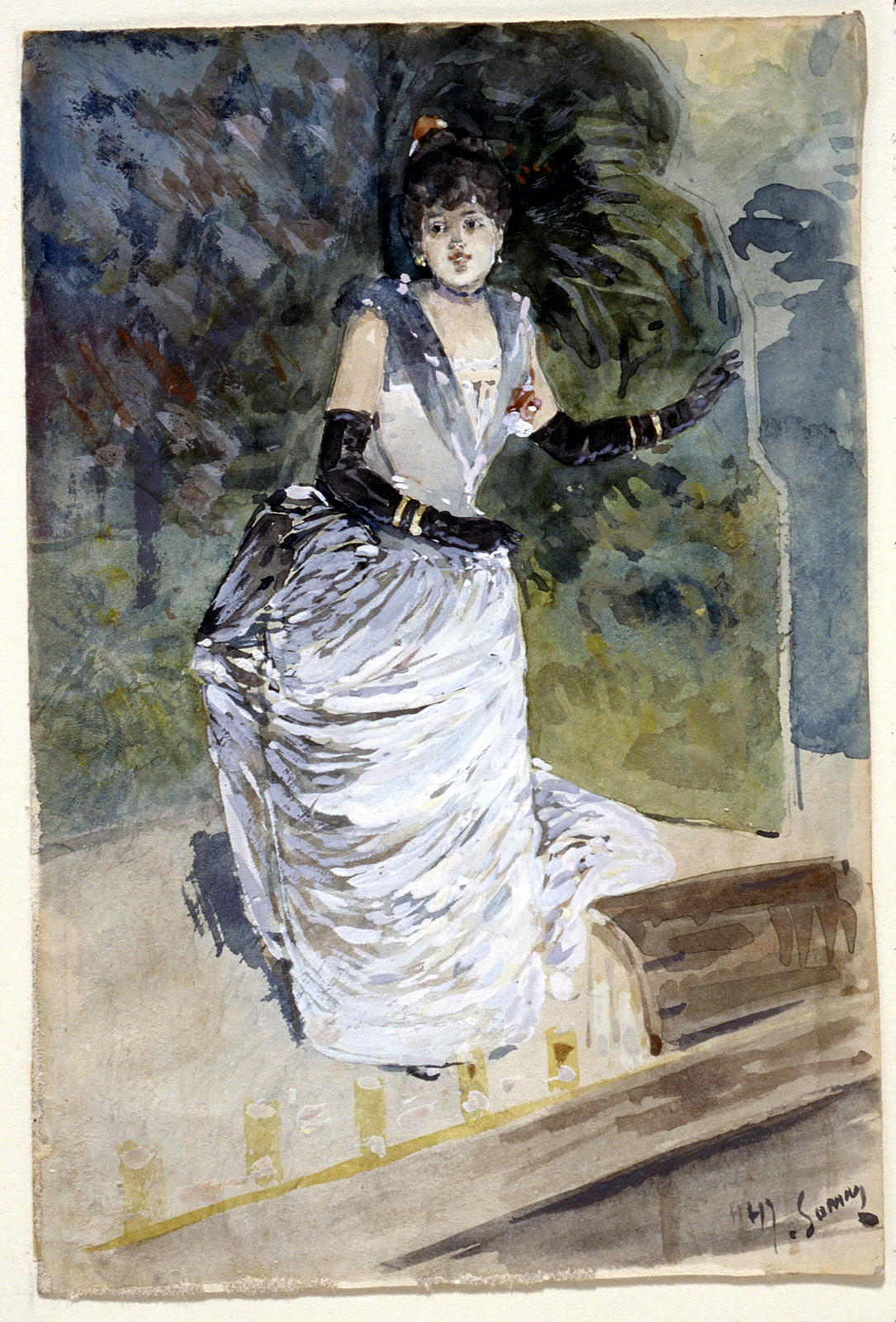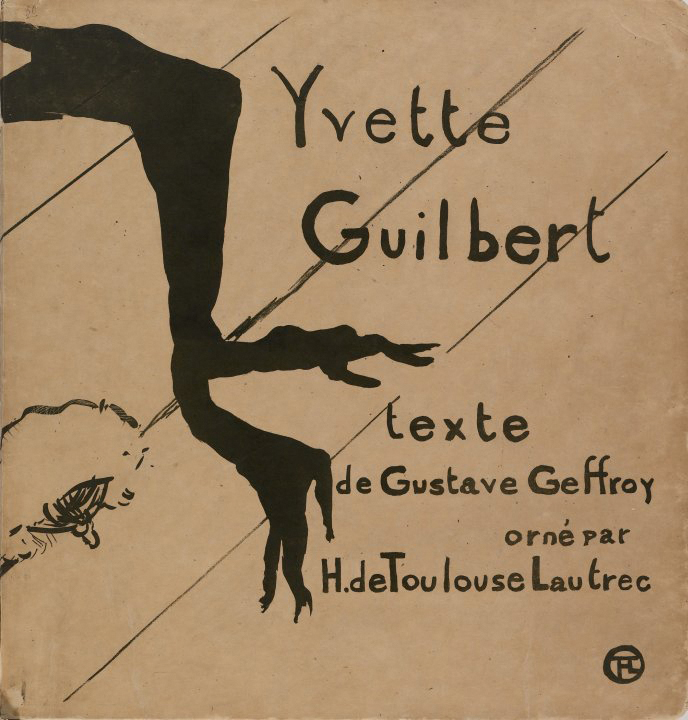
60. Georges d’Espagnat, Yvette Guilbert Singing
| Artist | Georges d’Espagnat, French, Melun, Seine-et-Marne 1870–Paris 1950 |
| Title, Date | Yvette Guilbert Singing, not dated |
| Medium | Black crayon, watercolor, and gouache |
| Dimensions | 17 1/4 × 11 1/2 in. (43.8 × 29.2 cm) |
| Inscriptions + Marks | Lower center in black crayon: G d’E |
| Provenance | Sale, Importants tableaux XIXe et modernes dont une collection de tableaux d’Abel Lauvray, Hôtel Drouot, Paris, June 10, 1996; [Neal Fiertag, Paris; to Weisberg]; Yvonne and Gabriel Weisberg, Minneapolis |
| Exhibition History | "Centenaire du cabaret du Chat Noir," Musée de Montmartre, Paris, 1981; "Paris 1900," Oklahoma City Museum of Art, 2007; "Expanding the Boundaries: Selected Drawings from the Yvonne and Gabriel P. Weisberg Collection," Mia (2008) and Snite Museum of Art, Notre Dame, Ind. (2010); "Reflections on Reality: Drawings and Paintings from the Weisberg Collection," Mia, 2022–23 |
| References | Hardy George et al., "Paris 1900" (exh. cat.), Oklahoma City Museum of Art (Oklahoma City, 2007), p. 72, no. 30; Lisa Dickinson Michaux with Gabriel P. Weisberg, "Expanding the Boundaries: Selected Drawings from the Yvonne and Gabriel P. Weisberg Collection" (exh. cat.), Minneapolis Institute of Arts (Minneapolis, 2008), pp. 54–55, 57, fig. 33 |
| Credit Line | Promised gift of Gabriel P. and Yvonne M.L. Weisberg, Minneapolis |
Yvette Guilbert stands onstage, footlights illuminating her face from below. Her arms hang down, covered in the long, black gloves that she wore when performing. She is almost without expression; only the slight forward lean of her narrow frame hints at her connection with an unseen audience. And connect she did: Guilbert was a darling of Parisian nightlife throughout the 1890s.
Along with her gloves, the legendary cabaret singer is readily identifiable from her prominent upturned nose, pale complexion, and long neck. Her witty, often bawdy lyrics and idiosyncratic delivery—frequently more spoken than sung—drew enthusiastic audiences to venues such as the extravagant Moulin Rouge and the smaller Divan Japonais in the Pigalle district of Paris, near Montmartre. In this drawing, Georges d’Espagnat portrayed her alone, emphasizing the intimacy of our proximity to the performer rather than the spectacle of a large production. We can share the audience’s sense of anticipation as we witness the moment when she is about to sing.


D’Espagnat was one of many artists who recorded Guilbert in performance. Among the numerous examples, one could cite Théophile Alexandre Steinlen and his poster for her appearance at the Ambassadeurs, a Parisian café concert around the corner from the posh Place de la Concorde (fig. 1).1 His vantage point gives us a prized viewing location in the wings. In a Henry Somm gouache, she is seen from the perspective of a loge (fig. 2). She was a favorite subject of Henri de Toulouse-Lautrec, who portrayed her not only in portraits and caricatures but in a lithograph that merely featured long, black gloves flowing down some stairs (fig. 3). The image served as the cover for an artist’s book with sixteen Lautrec prints of Guilbert.2

Yvette Guilbert Singing is the only work in the Weisberg Collection that focuses on a cabaret performer. It is also unusual within the oeuvre of d’Espagnat, whose subjects tend toward domestic life, landscapes, nudes, and still-lifes. Later in his career, he was inspired by his contacts with the Fauves (Wild Beasts), a group of artists in Paris whose images border on abstraction.
GPW